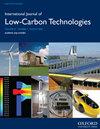利用再生聚对苯二甲酸乙二醇酯聚合物和低密度聚乙烯合成一种用于热带气候温室设计的新型透光材料
IF 2.3
4区 工程技术
Q3 ENERGY & FUELS
引用次数: 0
摘要
为了支持泰国农业的循环经济,主要的访谈挑战指向温室结构和系统提高生产力的知识和诀窍。可能影响生产效率的常见材料是透明聚合物薄膜,可根据材料性能和吹塑机条件进行回收。本文研究了用于热带气候下低能耗温室的透明聚对苯二甲酸乙二醇酯聚合物(PET)和低密度聚乙烯(LDPE)片材的透光性能。该研究的目的是优化这些材料的热性能和透光性,以支持植物生长和人体舒适度。这项研究聚焦于植物生长的七个阶段,每个阶段都需要不同的光照特征,包括1)种子,2)发芽,3)幼苗,4)老藤,5)开花,6)结果,7)收获和干燥。每个阶段需要不同的光特性,例如光强、红光、蓝光、白光、紫外线和脉冲光。该方法包括选择PET和LDPE材料,准备用于热性能和照明实验室测试的样品,并根据合适的标准分析结果。结果表明,LDPE薄膜的透光率比PET薄膜低28.78%,适合于苗期和老藤的植物生长支撑。另一方面,PET薄膜可以发出高强度的红光,这使得它们适合刺激老葡萄藤和收获过程中的光合作用。该研究强调了在热带气候下为低能耗温室选择材料时考虑热性能和透光率的重要性。本文章由计算机程序翻译,如有差异,请以英文原文为准。
A novel synthesis of light transmission from upcycled polyethylene terephthalate polymer and low-density polyethylene for greenhouse design in tropical climate
Abstract To support the circular economy in Thai’s agriculture, the main interviewed challenges point to knowledge and knowhow for greenhouse structure and system boosting up productivities. One popular material that possibly affected productivity is transparent polymer film, which can be recycled based on material property and blowing machine condition. This paper investigates the light transmittance performance of transparent polyethylene terephthalate polymer (PET) and low-density polyethylene (LDPE) sheets for use in low-energy greenhouses in tropical climates. The aim of the study is to optimize the thermal performance and light transmittance of these materials to support plant growth and human comfort. The study focuses on seven stages of plant growth, each of which requires different light characteristics including 1) seed, 2) germinating, 3) young seedling, 4) older vine, 5) flowering, 6) fruit bearing and 7) harvesting and drying. Each stage requires different light characteristics, e.g. light intensity, red light, blue light, white light and ultraviolet (UV) and pulsed light (PL). The methodology involves selecting PET and LDPE materials, preparing samples for thermal property and lighting laboratory tests and analysing the results based on suitable criteria. The findings show that LDPE sheets have 28.78% lower light transmittance than PET sheets, making them suitable for supporting the seedling stage and older vines of plant growth. PET sheets, on the other hand, deliver a high intensity of red light, making them suitable for stimulating photosynthesis in older vines and during the harvesting process. The study highlights the importance of considering both thermal performance and light transmittance when selecting materials for low-energy greenhouses in tropical climates.
求助全文
通过发布文献求助,成功后即可免费获取论文全文。
去求助
来源期刊

International Journal of Low-carbon Technologies
Engineering-Architecture
CiteScore
4.30
自引率
4.30%
发文量
106
审稿时长
27 weeks
期刊介绍:
The International Journal of Low-Carbon Technologies is a quarterly publication concerned with the challenge of climate change and its effects on the built environment and sustainability. The Journal publishes original, quality research papers on issues of climate change, sustainable development and the built environment related to architecture, building services engineering, civil engineering, building engineering, urban design and other disciplines. It features in-depth articles, technical notes, review papers, book reviews and special issues devoted to international conferences. The journal encourages submissions related to interdisciplinary research in the built environment. The journal is available in paper and electronic formats. All articles are peer-reviewed by leading experts in the field.
 求助内容:
求助内容: 应助结果提醒方式:
应助结果提醒方式:


